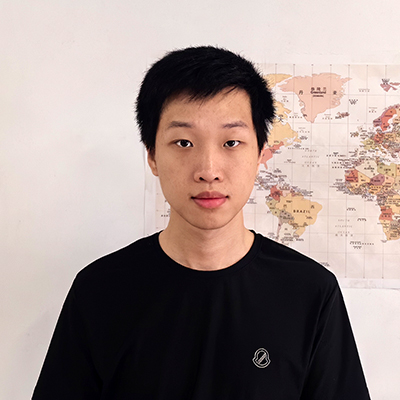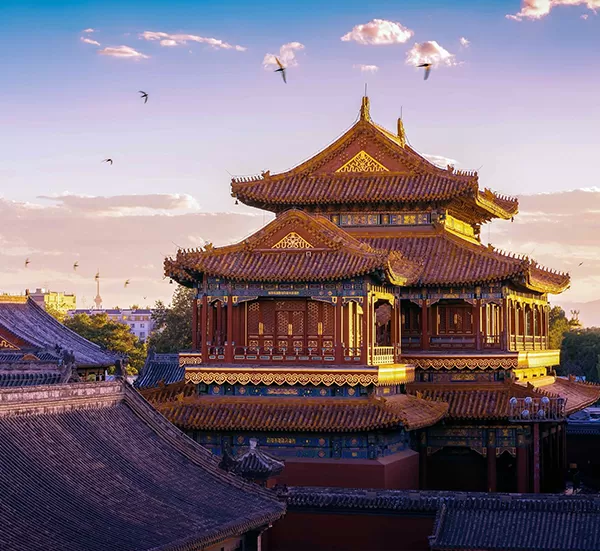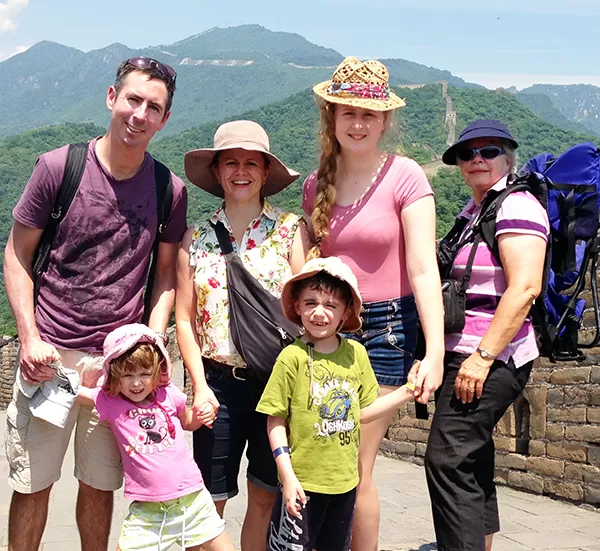Top 10 Famous Tourist Attractions and Sightseeing in Beijing
Beijing, this ancient city with a rich history, mixes classical charm with modern vitality to perfection. As the capital of China, it is not only the political center but also a hub of culture and history. The Forbidden City, the Great Wall, and the Summer Palace—these famous names serve as Beijing's calling cards to the world. Here are the Beijing top 10 attractions.
Top 1: Forbidden City
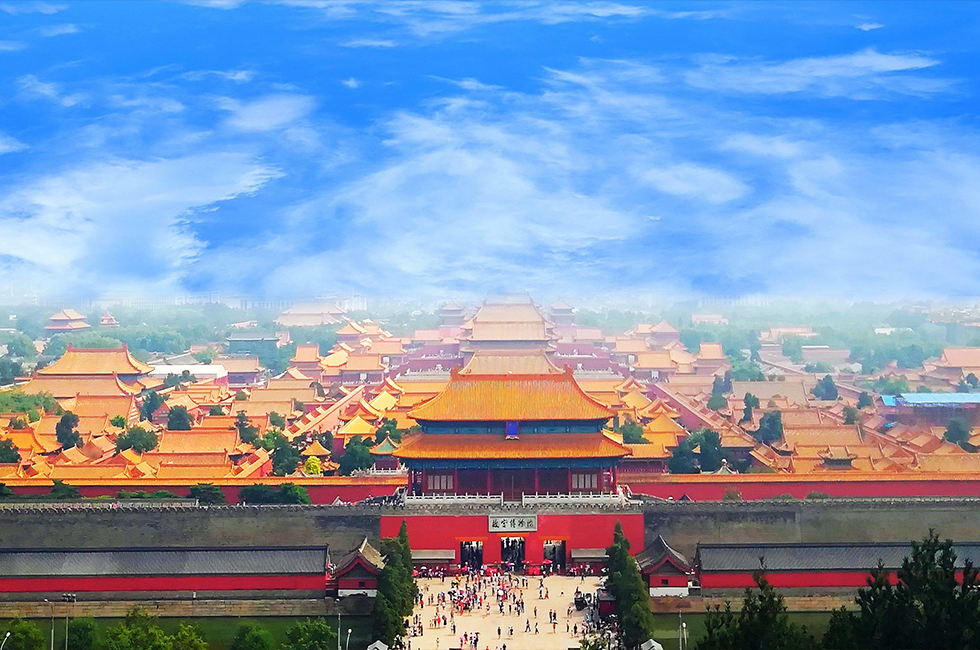 Forbidden City
Forbidden CityThe Forbidden City, also known as the Imperial Palace or the Palace Museum, was the imperial palace of China's Ming and Qing dynasties. Located at the center of Beijing's central axis, it is centered around the three main halls and covers an area of approximately 720,000 square meters, with a building area of about 150,000 square meters, comprising over seventy palaces of various sizes.
Construction of the Forbidden City began in 1406 during the Ming dynasty, modeled after the Nanjing Imperial Palace, and was completed in 1420, served as the imperial residence for 24 emperors during the Ming and Qing dynasties. The Forbidden City stretches 961 meters from north to south and 753 meters from east to west. It is surrounded by a 10-meter-high wall and a 52-meter-wide moat, with four gates on each wall, and four corner towers at each corner.
The Forbidden City is one of the largest and most well-preserved ancient wooden architectural complexes in the world. As a landmark of Beijing, it is the political center of China for centuries, symbolizing the unity of the multi-ethnic Chinese nation. The Palace Museum preserves cultural treasures spanning from ancient to modern times, reflecting the unbroken lineage of Chinese culture and serve as historical witnesses to the flourishing development of Chinese civilization.
More about the Forbidden City »
- Address: No. 4 Jingshan Front Street, Dongcheng District, Beijing
- Open Hours: 08:30 AM – 05:00 PM, Closed on Mondays
- Tour Length: 3-6 hours
Top 2: Badaling Great Wall
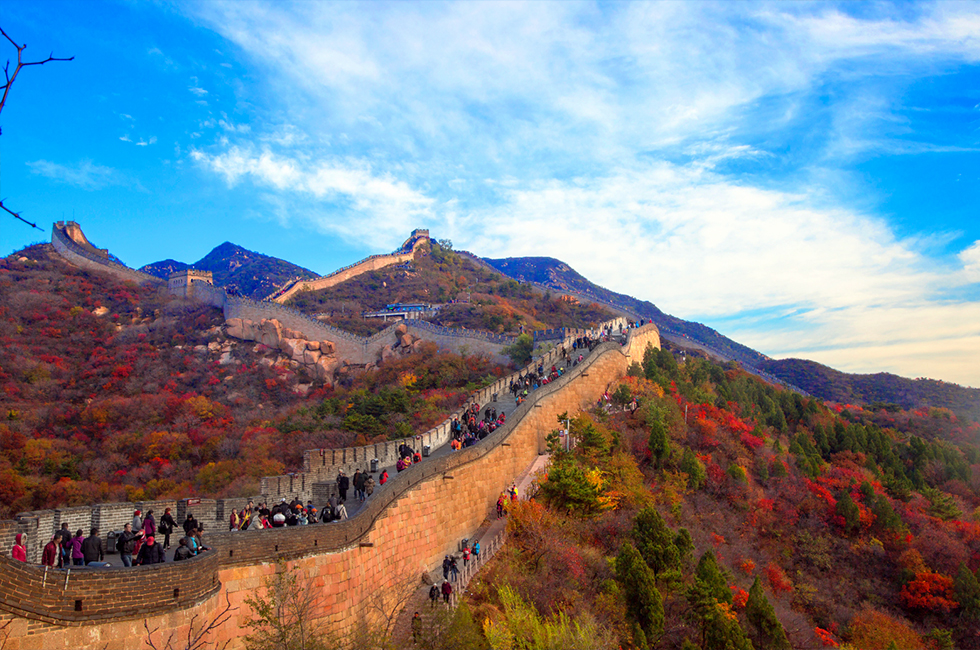 Badaling Great Wall
Badaling Great WallThe Badaling Great Wall is located at the northern entrance of the ancient Guanguo Road in the Jundu Mountains of Beijing, covering a sightseeing area of 1.19 million square meters. With its steep terrain and commanding position, Badaling was a critical military stronghold and an important shield for Beijing during the Ming dynasty. As an important outpost of Juyong Pass, it was historically said, "The danger of Juyong lies not in the pass itself but in Badaling".
Known as one of the "Nine Strategic Passes under Heaven", the Badaling Great Wall is considered the essence of the Great Wall and is uniquely representative among the Ming Great Wall sections. Its strategic location made it a vital route connecting Shanxi, Inner Mongolia, and Zhangjiakou.
The Badaling Great Wall showcases the grandeur and rugged beauty of the Great Wall. As a barrier for Beijing, it is surrounded by overlapping mountain ridges and treacherous terrain. The imposing wall winds its way through the steep mountains to the north and south, extending as far as the eye can see. The wall built along the mountain contours dominates precipitous cliffs, where the ancient inscription of the words "Heavenly Danger" carved on the cliffs indicates the perilous terrain and strategic significance of Badaling.
More about the Badaling Great Wall »
- Address: No. 58, G6 Beijing-Tibet Expressway, Yanqing District, Beijing
- Open Hours: 06:30 AM – 04:30 PM
- Tour Length: 3-4 hours
Top 3: Temple of Heaven
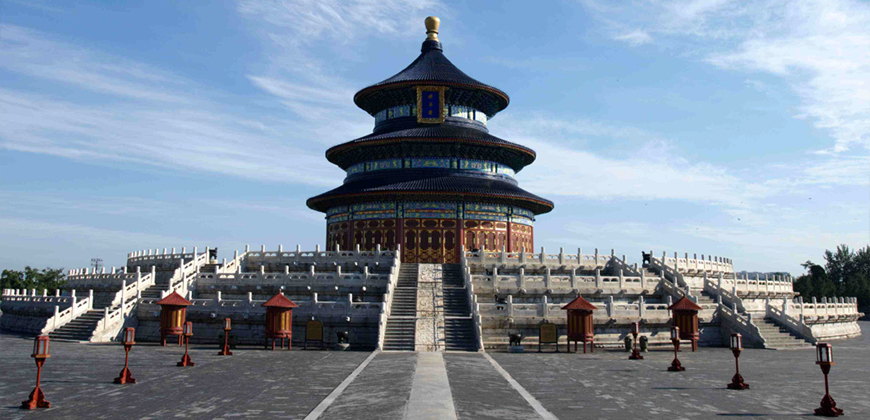 Temple of Heaven
Temple of HeavenThe Temple of Heaven, located on the east side of Yongdingmen Street, was built in 1420 during the Ming Dynasty, served as the place where emperors of the Ming and Qing dynasties performed ceremonies to worship the heavens and pray for harvests, covering a total area of 273 hectares, which is the largest existing ancient sacrificial architectural complex in China.
The Temple of Heaven is surrounded by two concentric walls and is divided into the "Inner Altar" and "Outer Altar". The northern part is circular, while the southern part is square, symbolizing the ancient Chinese belief of "Heaven is round and the Earth is square". The complex primarily consists of four ancient architectural complexes, among which the Hall of Prayer for Good Harvests, where the emperor prayed for good harvests, is an iconic building of Beijing.
The Hall of Prayer for Good Harvests, whose interior space rises layer by layer, converging towards the center, while the circular base and eaves on the exterior gradually taper upward, creates a strong sense of upward motion while simultaneously exuding a sense of dignity and stability. The striking contrast in colors is harmonious and well-proportioned, making people as if ascend to the heavens walking on clouds.
More about the Temple of Heaven »
- Address: No. 1, Tiantan Road, Dongcheng District, Beijing
- Open Hours: 06:00 AM – 10:00 PM
- Tour Length: 1-2 hours
Top 4: Tian’anmen Square
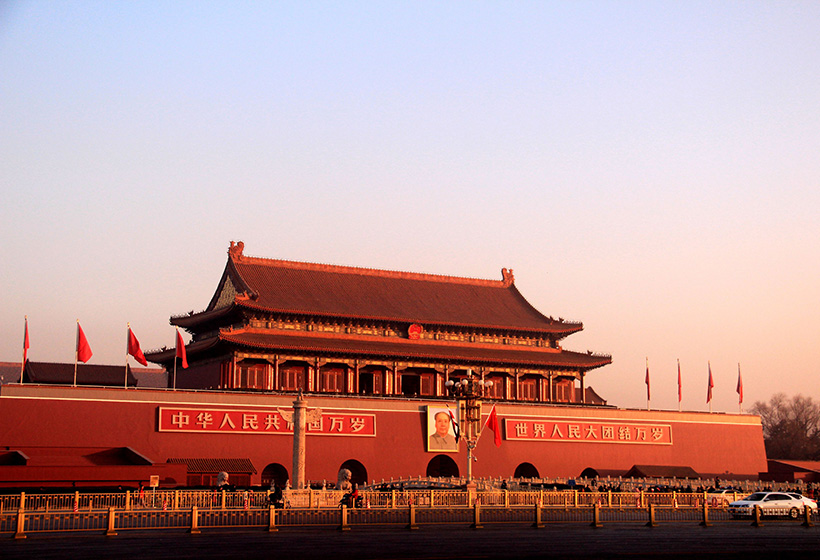 Tian’anmen
Tian’anmenTian’anmen Square is located at the intersection of Beijing's central axis and Chang'an Avenue. After multiple modifications and adjustments, it has evolved into a vast square measuring 880 meters from north to south and 500 meters from east to west, covering an area of 440,000 square meters, making it the largest city square in the world.
The main structure, Tian’anmen, stands 34.7 meters tall and consists of two parts: the base platform and the gate tower, covering an area of 4,800 square meters. The gate tower has two levels. The lower level features a white marble Sumeru base, upon which stands a large trapezoidal red platform. The upper level houses the grand hall of the gate tower, which measures approximately 21.7 meters in height from the platform top to the roof. Above the central archway of the platform hangs a portrait of Mao Zedong.
On October 1, 1949, Chairman Mao Zedong proclaimed the founding of the People's Republic of China from the Tian’anmen. Since then, Tian’anmen has become a symbol of China, and its solemn and dignified image is an integral part of the national emblem. As a symbol of New China and a site of unparalleled political importance and reverence, it is a place admired and aspired to by people from across China and the world.
More about the Tian’anmen Square »
- Address: Chang 'an Avenue, Dongcheng District, Beijing
- Open Hours: 08:30 AM – 05:00 PM
- Tour Length: 1 hour
Top 5: Summer Palace
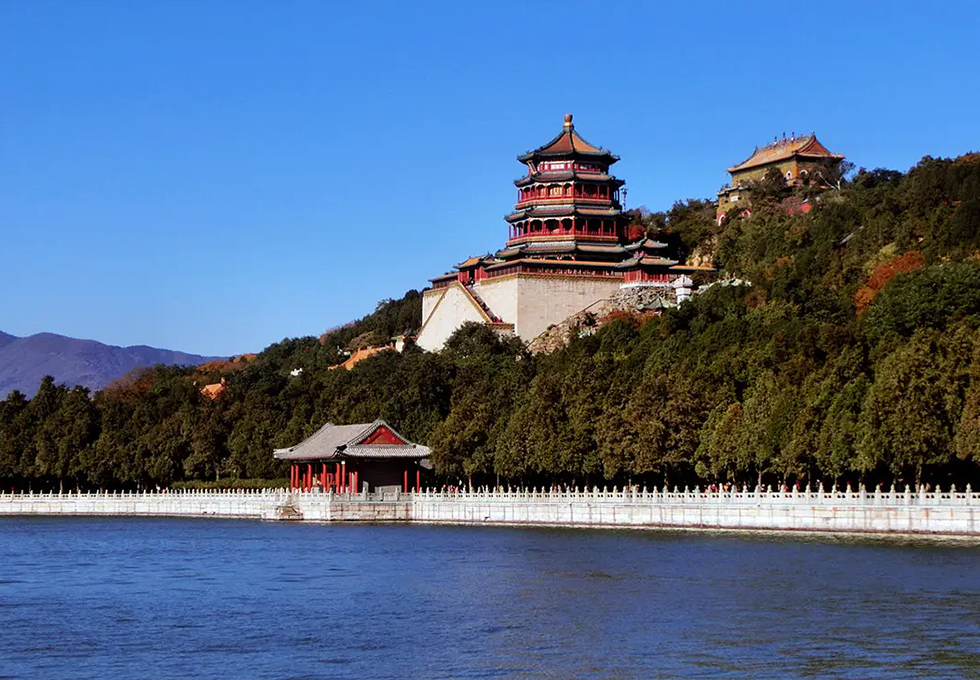 Qiong Island in Summer Palace
Qiong Island in Summer PalaceThe Summer Palace, a royal garden from the Qing Dynasty, is a large natural landscape garden built upon the foundation of Kunming Lake and Longevity Hill, with the landscape of West Lake in Hangzhou as its model. It is the most well-preserved royal palace garden and is often referred to as a museum of royal gardens. The entire complex spans 3.009 square kilometers, dotted with over a hundred scenic buildings, more than twenty courtyards, over three thousand ancient structures, and around 1,600 ancient trees and famous plants.
Construction of the Summer Palace began in 1750 during the Qing Dynasty, but it was burned down by the Anglo-French forces in 1860. It was rebuilt in 1886, only to be destroyed again by the Eight-Nation Alliance in 1900, before being restored in 1902.
The most prominent feature of the Summer Palace is the perfect combination of natural landscapes surrounded by mountains and water with the grand and majestic royal palace architecture. The design is carried out in the midst of real mountains and waters, highlighting the royal grandeur while reflecting the harmonious unity of the garden with nature. It not only learn from nature but also transcends it, blending natural beauty with human craftsmanship in a delicate and ingenious manner.
More about the Summer Palace »
- Address: No.19, Xinjian Gongmen Road, Haidian District, Beijing
- Open Hours: 06:00 AM – 07:00 PM
- Tour Length: 3-6 hours
Top 6: South Luogu Lane
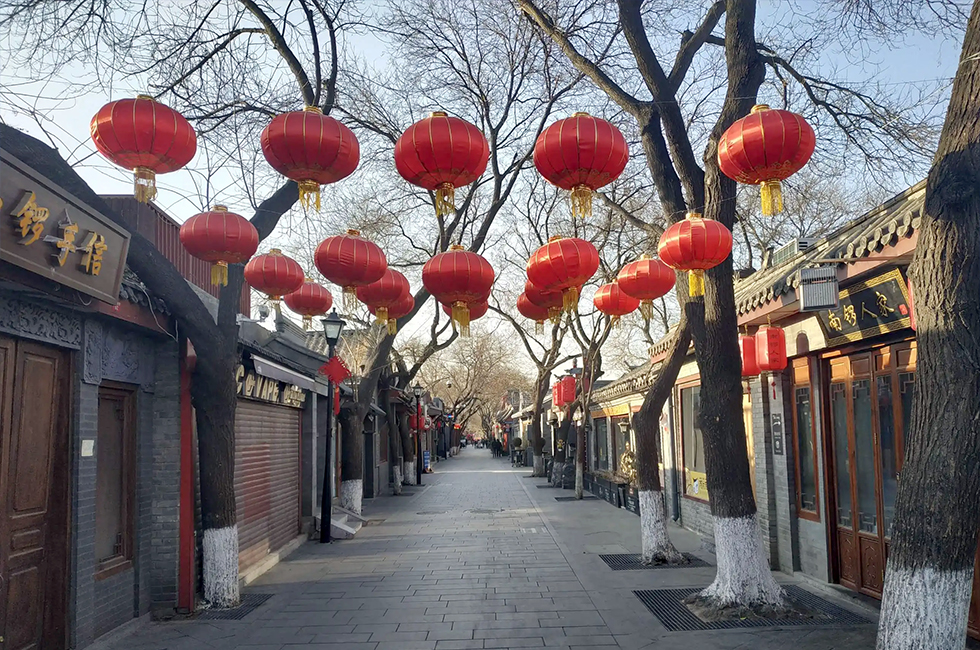 Beijing Hutong
Beijing HutongSouth Luogu Lane, located in the Dongcheng District of Beijing, was built during the same period as the Yuan Dynasty's capital, Dadu. It runs north to south, with a length of 787 meters and a width of 8 meters. It is one of the most popular and charming hutong areas in Beijing, blending a cozy, modern atmosphere with the traditional flavor of old Beijing.
South Luogu Lane is a famous alley with a rich historical and cultural heritage, and it is one of the oldest neighborhoods in Beijing. The area has preserved the unique layout of the Yuan Dynasty's hutongs and courtyards, making it the largest, highest-grade, and most resource-rich traditional grid-style residential area in China. The alley is flanked by 16 smaller hutongs on both the east and west sides, arranged in a herringbone texture. From above, the entire street looks like a centipede, which is why it is also known as "Centipede Street".
South Luogu Lane was home to many high-ranking officials and cultural elites. It not only has preserved numerous ancient hutongs and quadrangle courtyards with gray brick and tile roofs, but also has deposited rich cultural heritage for many former residences of famous figures.
- Address: South luogu Lane Hutong, Dongcheng District, Beijing
- Open Hours: 10:00 AM – 09:00 PM
- Tour Length: 1-4 hours
Top 7: Prince Gong's Mansion
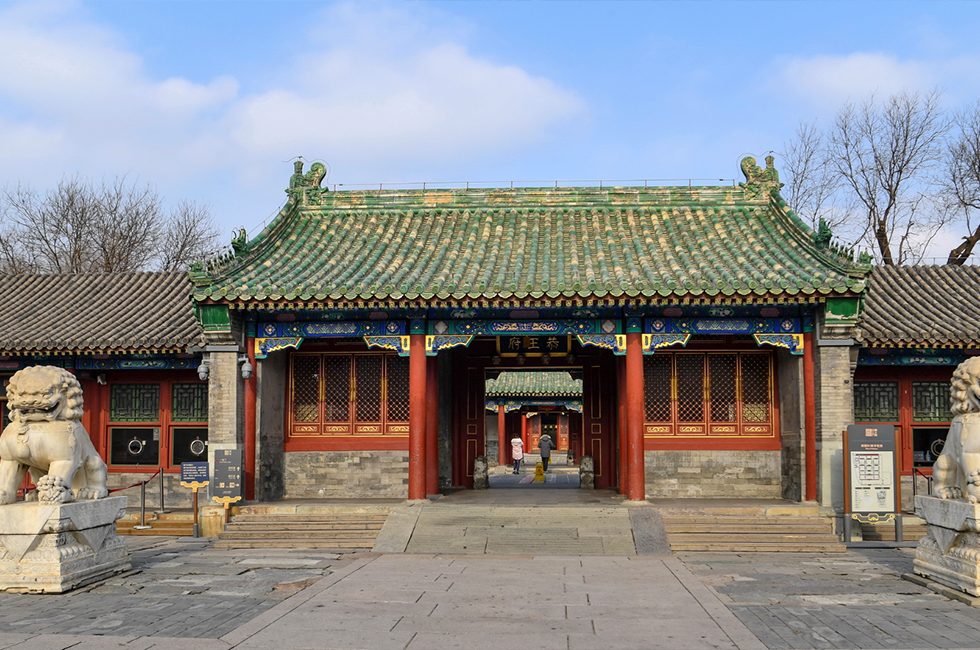 Prince Gong's Mansion
Prince Gong's MansionThe Prince Gong's Mansion, located on the southern shore of Shichahai, is known as the "Pearl of Shichahai" and is the largest prince's residence from the Qing Dynasty. In 1851, Prince Gong Yixin became the owner of the mansion, and the name "Prince Gong's Mansion" was derived. The mansion witnessed the rise and fall of the Qing Dynasty, earning the saying, "One Prince Gong's Mansion, half of Qing history".
Covering about 60,000 square meters, the mansion consists of over 30 architectural structures. Its garden, located at the rear of the mansion and also known as Cuijin Garden, occupies an area of 28,000 square meters. The garden’s layout is divided into three sections—east, central, and west—each featuring multiple courtyards arranged along a strict central axis that runs from south to north.
The mansion's interior decoration is exquisite, with all furnishings crafted from hardwood. The woodwork is intricately carved with patterns and shapes, using round or curved designs to form various decorative grids, which can only be achieved through meticulous processing. When the garden was being build, over a hundred skilled craftsmen are gathered. The mansion's grandeur was unmatched, and it represents the essence of the royal mansion and garden art that still exists in Beijing today.
More about the Prince Gong's Mansion »
- Address: No. 17 Qianhai West Street, Xicheng District, Beijing
- Open Hours: 08:30 AM – 05:00 PM
- Tour Length: 2-4 hours
Top 8: Olympic Park
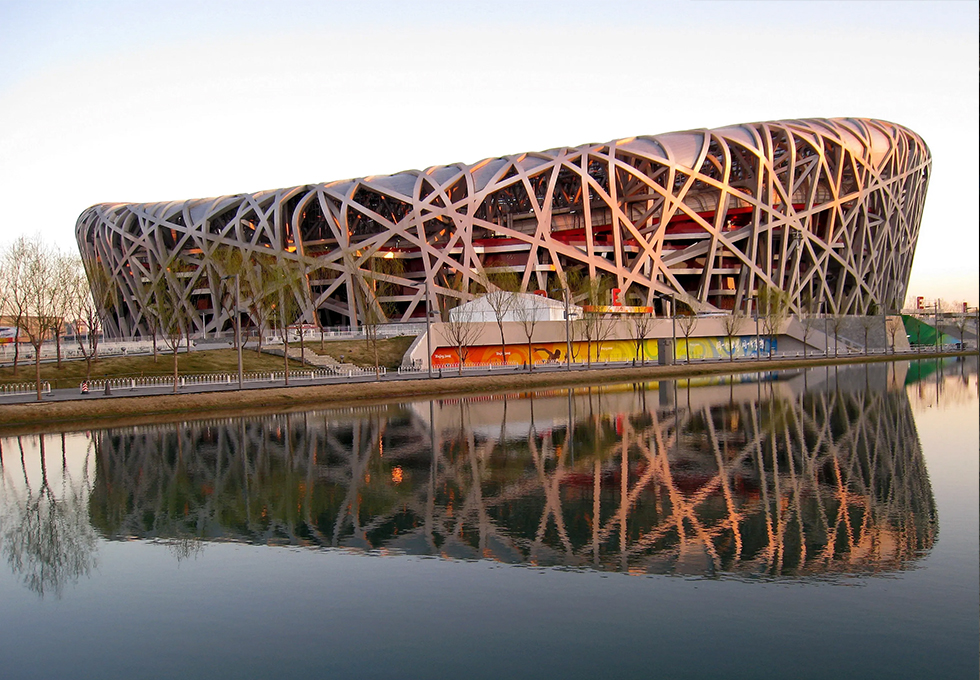 Bird Nest
Bird NestThe Beijing Olympic Park, located at the northern end of Beijing's central axis, was the venue for the 2008 Beijing Olympic Games and Paralympic Games. Covering a total area of 11.59 square kilometers, it embodies the three key principles of "technology, green, and culture." The park is mainly divided into two areas from south to north: the Olympic Park Central Area and the Olympic Forest Park.
Situated in the Olympic Park Central Area, the Bird's Nest (National Stadium) and the Water Cube (National Aquatics Center) are two iconic buildings from the 2008 Beijing Olympics. After serving as the main venues for the Games, they have become windows showcasing the charm of Beijing. The Bird's Nest represents Yang, with its grand and unique nest-like architecture made entirely of massive steel frameworks, embodying the power and might of the male form. In contrast, the Water Cube represents Yin, showcasing the gentle beauty of water. The Water Cube is square, while the Bird's Nest is round, together embodying the ideal of "Heaven is round and Earth is square" from traditional Chinese culture. Positioned side by side, they together form an iconic feature of Beijing's urban landscape.
- Address: No. 15 Beichen East Road, Chaoyang District, Beijing
- Open Hours: 06:30 AM – 10:00 PM
- Tour Length: 2-4 hours
Top 9: Beihai Park
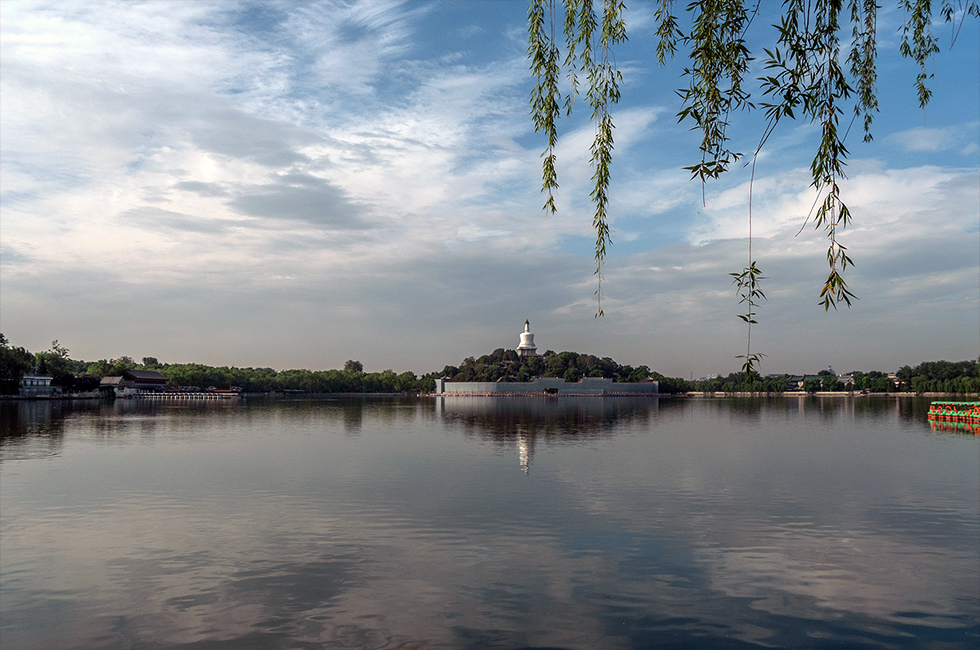 Beihai Park
Beihai ParkBeihai Park, located in the central area of Beijing, covers a total area of 682,000 square meters. It is the oldest and most well-preserved classical royal garden in China, with the deepest cultural heritage. The formation and development of the park have spanned several dynasties, including the Jin, Yuan, Ming, and Qing, carrying nearly a thousand years of Chinese history and culture, and is a masterpiece that embodies the culmination of the garden culture and artistic traditions of successive dynasties.
The park is adorned with unique pavilions and winding corridors. The layout of the entire garden is inspired by the mythological "One Pond and Three Immortal Mountains", rich in a fantastical atmosphere. On Qiong Island, the center of the park, stands a 67-meter-high Tibetan-style White Pagoda, along with the "Spring Shadows on Qiong Island" stele inscribed by Emperor Qianlong of the Qing Dynasty. On the east bank, several courtyard-style gardens are nestled among the tall pine and cypress trees, blending natural beauty with the charm of private southern Chinese gardens. The west bank, cleverly utilizes the Chinese garden design, building a landscape where views are hidden in the forest and secluded spots are concealed beneath the flowers.
- Address: No. 1 Wenjin Street, Xicheng District, Beijing
- Open Hours: 06:30 AM – 08:00 PM
- Tour Length: 4-5 days
Top 10: 798 ArtDist
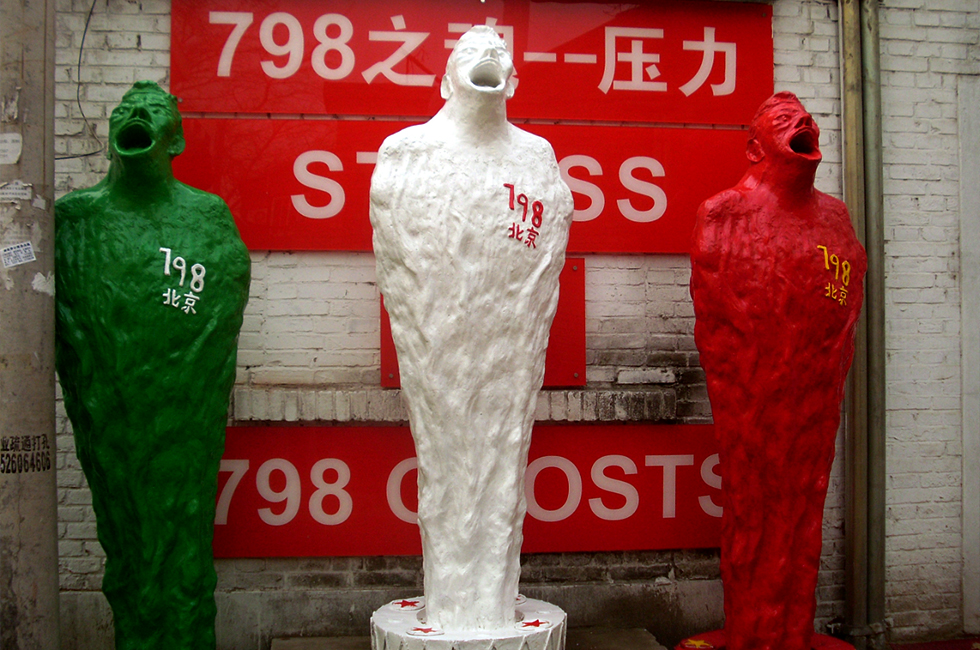 798 ArtDist
798 ArtDistThe 798 ArtDist, or the 798 Art Zone, is an iconic art landmark in the Chaoyang District of Beijing, covering an area of 253,800 square meters, and is divided into six sections.
Originally, 798 was a joint factory built with Soviet aid and designed by East Germany. Since 2002, due to low rents, spacious loft-style interiors, the unique Bauhaus architectural style, and its proximity to art institutions such as the Central Academy of Fine Arts, it has become a gathering place for artists, fostering a distinctive art ecosystem.
The weathered red brick walls, the scattered industrial factories, and the crisscrossing pipes, all kinds of fanciful artistic creations come together here, with walls still bearing slogans from different eras. Whether renowned artists or aspiring unknowns, all have once been drawn to gather here. In this place, history and reality, industry and art, refinement and ruggedness, as well as elitism and the masses, perfectly merge together.
- Address: No. 4 Jiuxianqiao Road, Chaoyang District, Beijing
- Open Hours: 00:00 AM – 12:00 PM
- Tour Length: 2-4 hours
Customize Your Unique Beijing Tour

If you are interested in the Beijing itineraries mentioned above, please contact us, and we will be happy to customize it and provide a quote tailored to your preferences.
Alternatively, if you would like to customize your Beijing Tour, please visit our Beijing Tour Customized Center. We assure you that you will receive a reply within 24 working hours.
Informative Articles for Your Beijing Trip
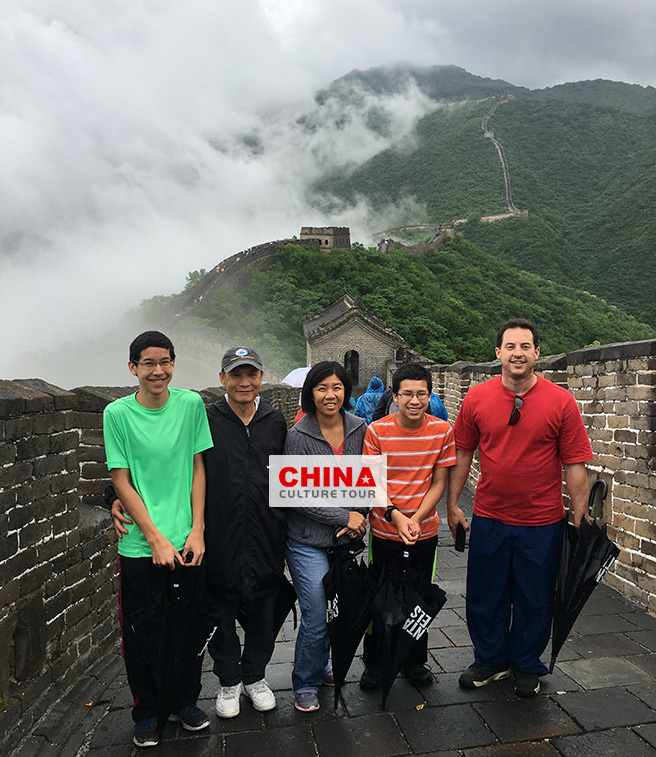 Climb the Great Wall
Climb the Great Wall- Travel Guide: attractions, weather, hotels, food, etc.
- Weather: the best time and seasons to visit Beijing
- Top attractions: sightseeings to watch in Beijing
- Top destinations: best places to visit in Beijing
- Travel itineraries: itineraries for your reference
- Abundant activities: Beijing cultural immersions
- Unique perspective: top interesting things to do
- Local food: what to eat while traveling in Beijing
- Luxury hotels: accommodation to stay in Beijing
- Beijing Tours: customized tours for your reference
GREAT FAMILY CHINA TOUR
JULY 2024 We wanted to thank Grace at China Culture tour for organizing a great tour of China. We enjoyed our Beijing - Xian-Chengdu -Guilin -Yangshuo - Shanghai trip. Our local guides Bruce in Beijing, Susan in Xian, Jane in Chengdu, Mike in Guilin and Mary in Shanghai took care of us…read more details »
Teng Han L from SINGAPORE
Ready to Create a Unique Dream Travel?

